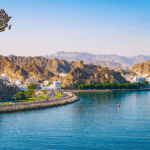Beyond Linear Projects: A Paradigm Shift in African Infrastructure Investment

For decades, the story of infrastructure in Africa has been one of isolated projects—a road from a mine to a port, a singular power plant. While beneficial, this linear, asset-specific approach fails to capture the exponential value required to catalyze broad-based economic transformation. It’s an outdated model for a continent on the cusp of an economic renaissance.
The future of African development demands a more sophisticated, holistic, and powerful approach. This is the thesis of Integrated Economic Corridors. It’s a strategic shift from funding standalone assets to architecting entire ecosystems of opportunity. This model posits that by strategically investing in a primary “artery”—be it a transnational railway, a fiber optic backbone, or a key logistical hub—we can unlock a cascading series of high-growth commercial opportunities that create a self-reinforcing cycle of prosperity.
Defining the Integrated Economic Corridor (IEC)
An Integrated Economic Corridor is not merely a transport route; it is a geographic region where targeted infrastructure investment acts as a powerful economic multiplier. Think of the central infrastructure as the trunk of a tree, from which numerous branches of industry, commerce, and social development can sprout and thrive.
By financing the core artery, we create the necessary conditions for a vibrant ecosystem to flourish around it. This allows for a multi-layered investment strategy that is both more resilient and exponentially more profitable.
The Multiplier Effect in Action
The true power of the IEC model lies in the “multiplier effect.” The anchor infrastructure project serves as a catalyst, spawning a host of ancillary businesses and investment opportunities that would otherwise be unviable.
- Agribusiness & Food Security: A new transport corridor can drastically reduce post-harvest losses by connecting vast areas of arable land to processing facilities and urban markets, transforming subsistence farming into a commercial powerhouse.
- Manufacturing & Industrialization: Reliable power and logistics, core components of an IEC, attract light manufacturing and assembly plants, enabling countries to move up the value chain and create stable, skilled jobs.
- Logistics & Trade: Warehousing, cold storage, and efficient customs processing centers naturally develop along major trade routes, forming the backbone of intra-African trade under the AfCFTA.
- Real Estate & Urban Development: As economic activity congregates along the corridor, demand for affordable housing, commercial real estate, and essential social services (schools, hospitals) creates new avenues for development and investment.
- Digital Infrastructure: Laying fiber optic cables alongside transport infrastructure creates a “digital spine,” enabling tech hubs and a knowledge-based economy to flourish in newly connected regions.
De-Risking Investment Through Ecosystem Diversification
One of the most compelling aspects of the IEC thesis is its inherent risk mitigation. In the traditional model, the success of an investment is tied to the performance of a single asset. If a port underperforms or a power plant faces regulatory hurdles, the entire investment is at risk.
The corridor approach fundamentally changes this dynamic.
Spreading Risk Across a Portfolio of Opportunities
With an IEC, investment success is not dependent on a single project but on the aggregate growth of the entire regional ecosystem.
- Diversified Revenue Streams: Returns are generated from a portfolio of assets across various sectors—transport tariffs, energy sales, real estate leases, and equity in growing agribusinesses.
- Synergistic Growth: The success of each component within the corridor enhances the value of the others. Better logistics make manufacturing more competitive, which in turn increases demand for housing and digital services. This synergy creates a resilient, interwoven economic fabric.
- Alignment with National Priorities: IECs are, by nature, large-scale, transformative projects that are deeply aligned with national and regional development plans (e.g., the African Union’s PIDA). This alignment with government priorities provides a significant layer of political and regulatory stability.
Architecting a Legacy of Sustainable and Sovereign Wealth
The ultimate goal of the Integrated Economic Corridor model is to move beyond the extractive, short-term thinking of the past. It is a blueprint for building sustainable, long-term prosperity that is owned and driven by the continent itself.
By focusing on the foundational “arteries” of the economy, we are not just building infrastructure; we are laying the groundwork for generational wealth creation, enhancing regional trade, and fostering true economic sovereignty. This is an investment in the entire value chain of a rising continent, ensuring that the benefits of Africa’s growth accrue to its people. It is a patient, strategic, and powerful approach designed for the architects of Africa’s ascendant future.







